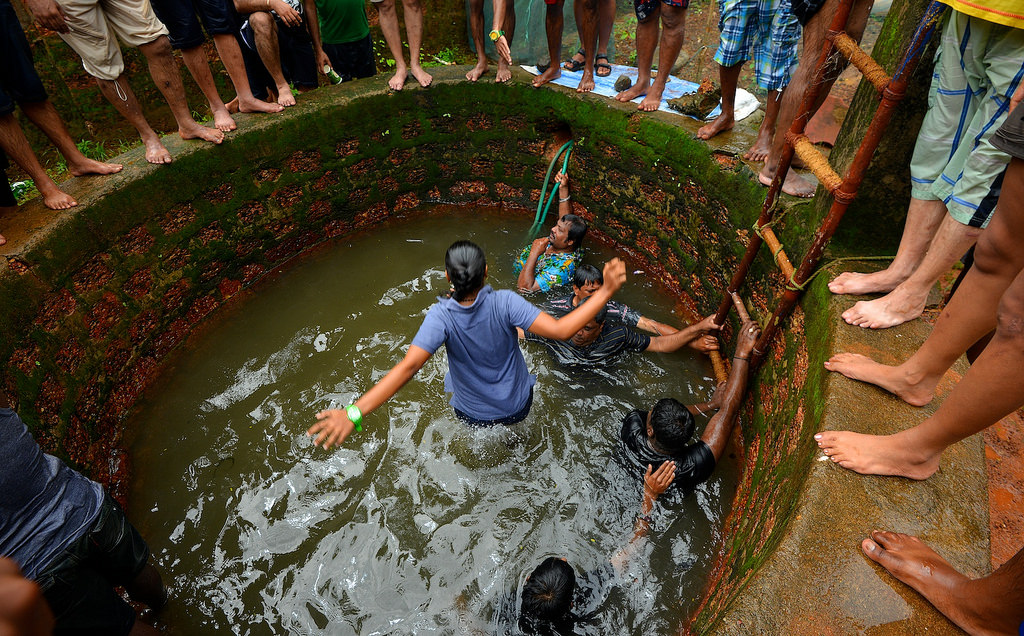Traditions of Sao Joao in Goa
By sanjit Posted 24-05-2021 Architecture
The monsoon adds a sense of calm in Goa, despite the rain. There’s a carpet of green across the land. The rivers rise and nature thrives. Life slows down, but just enough so you can still experience thrills within this serenity. Offbeat activities highlight an unusual side to the state, a side that involves spectacular inland locations.
Among the many things you can witness, is the vibrant Feast of St John the Baptist, known here as São João. The festival encapsulates the enthusiasm of the Goan spirit in a rather unusual way, one that sets it apart from any other festival in the subcontinent. Here's a brief overview of the history of São João that makes it an experience worth your time.
Purpose of São João and why it is celebrated
São João is celebrated on June 24 every year with great fervour amongst the Catholic community. For a first-time visitor to Goa, its celebrations can seem a bit peculiar especially when villagers plunge into wells, streams and ponds while ‘Viva São João’ rings out across the crowd. This fascinating scene serves a purpose. It is a tribute to St. John the Baptist, signifying the leaping of St. John, when in the womb of St. Elizabeth who was visiting Mary, the mother of Jesus. The story goes that St John, while still in his mother, St Elizabeth’s womb, leapt with joy at the sound of his aunt Mary’s voice, while she was pregnant with baby Jesus. To celebrate this, Goans leap into wells to signify the sanctification of St John.
How is it celebrated?
There is never a dull moment as villagers partake in the festivities around São João which are usually accompanied by the Ghumot (an earthen pot-shaped instrument) and Kansallem (a percussion instrument). People don costumes and ‘kopels’ which are coronets carefully tied together with leaves, wildflowers and fresh fruits when visiting houses around the ‘vado’ (village). No festival is complete without a hearty meal and São João is no different. While popular fruits such as jackfruits, bananas and pineapples are offered by every house, you can also taste some traditional Goan specialities such as sorpotel and sannas or choriso (Goan pork sausage).
São João is traditionally celebrated for newlyweds, those with new houses and people with newborn babies. New brides, in particular, wear ‘sados’- red dresses - and visit their in-law’s homes with ‘vojem’, a platter of food and fruit that includes bananas, jackfruits, sannas and ‘patoleo’ (a sweet made with finely ground rice that has a mixture of freshly scraped coconut and jaggery in the centre, steamed in a large banana leaf). On the other hand, the newlywed husbands are supposed to be the first to plunge into the well to fetch a bottle of feni, thereby beginning the merriment. It goes to show the strong ties to family and community the people of Goa have with one another.
São João celebrations in Goa
The festivities unfold in the villages of Calangute and Aldona with a long, winding procession. People sing mandos and make their way around the neighbourhood with mounds of pineapples, jackfruits, port wine and feni. ‘Sangodd’ is also organized in some areas of North Goa such as Pomburpa and Baga and villages in the South such as Colmorod, Velim and Assolna. Villagers tie two or more boats together and have a stage on it which signifies the unity of the village. There is also a programme that includes singing Konkani folk songs while a few competitions are also held for the youth at the venue.
The traditional São João Boat Festival organized by the villagers of Siolim is also a scene to admire. The youngsters of the village participate in this competition by painting boats and making massive sculptures based on various themes such as nature and mythical creatures. These boats float down the river, beginning from as far as the Chapora Creek entrance, passing by the church to the village of Siolim. On the day of the festival, villagers arrive colourfully dressed at the venue, where the stage is set up opposite the church. An entertainment programme is also held, which includes performances by locals.
Apart from the extravagant festivities in Siolim, you can witness Vangodd in Saligao, also known as ‘Vangodd de Saligao’. Focusing on community spirit, a programme that revolves around performances such as folk dances are held while Konkani songs are sung.
There is a strong sense of staying rooted in beliefs and traditions as everyone participates in the celebrations. There is an air of camaraderie even in the competitions held, highlighting the spirit of togetherness. While the most obvious attractions are diving into wells or pool parties amplifying electronic dance music, exploring these traditions that are passed through the ages is what gives São João its true meaning. The fact that these rituals are kept alive even today is what makes this celebration a remarkable experience.
While the monsoons serve as an idyllic ambience for partaking in the festivities of São João, it is also perfect for rejuvenating indoors, sitting by the window watching the rain nourish the earth outside. Moreover, with Kasu Homes’ passionately designed upcoming project ‘Kasu Zira’ in Reis Magos, top-notch vacation-style living is assured.
This site uses Akismet to reduce spam. Learn how your comment data is processed.


